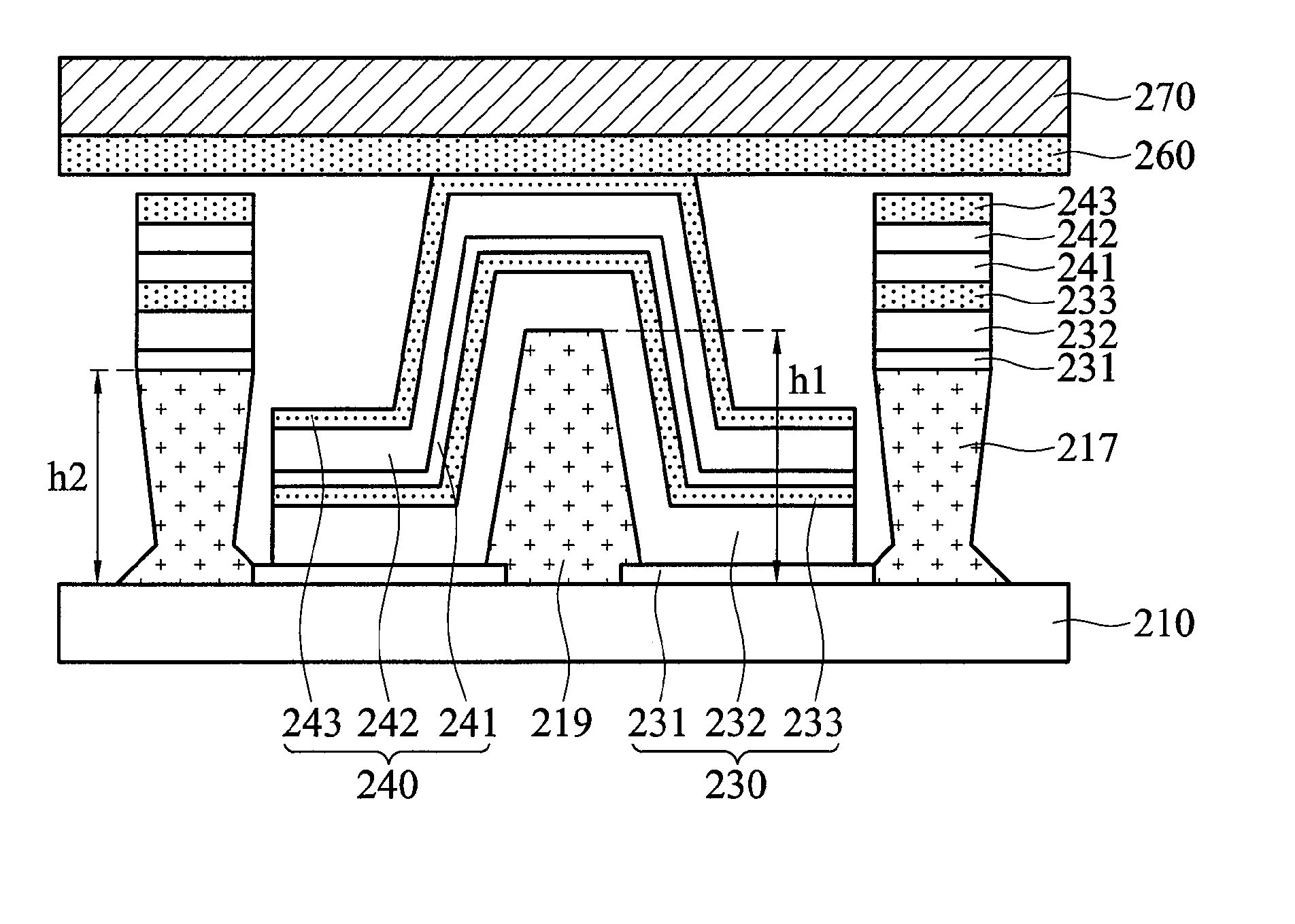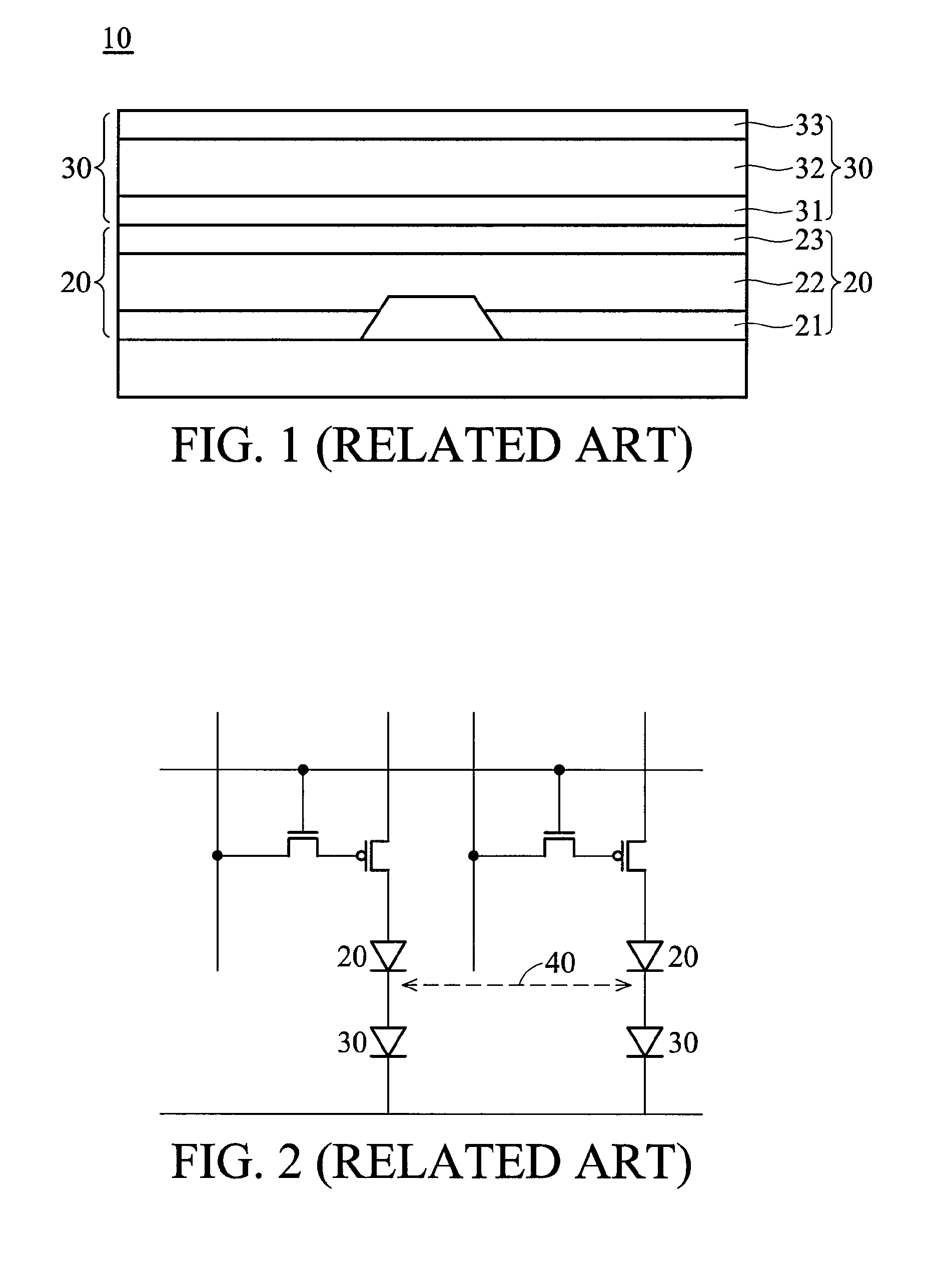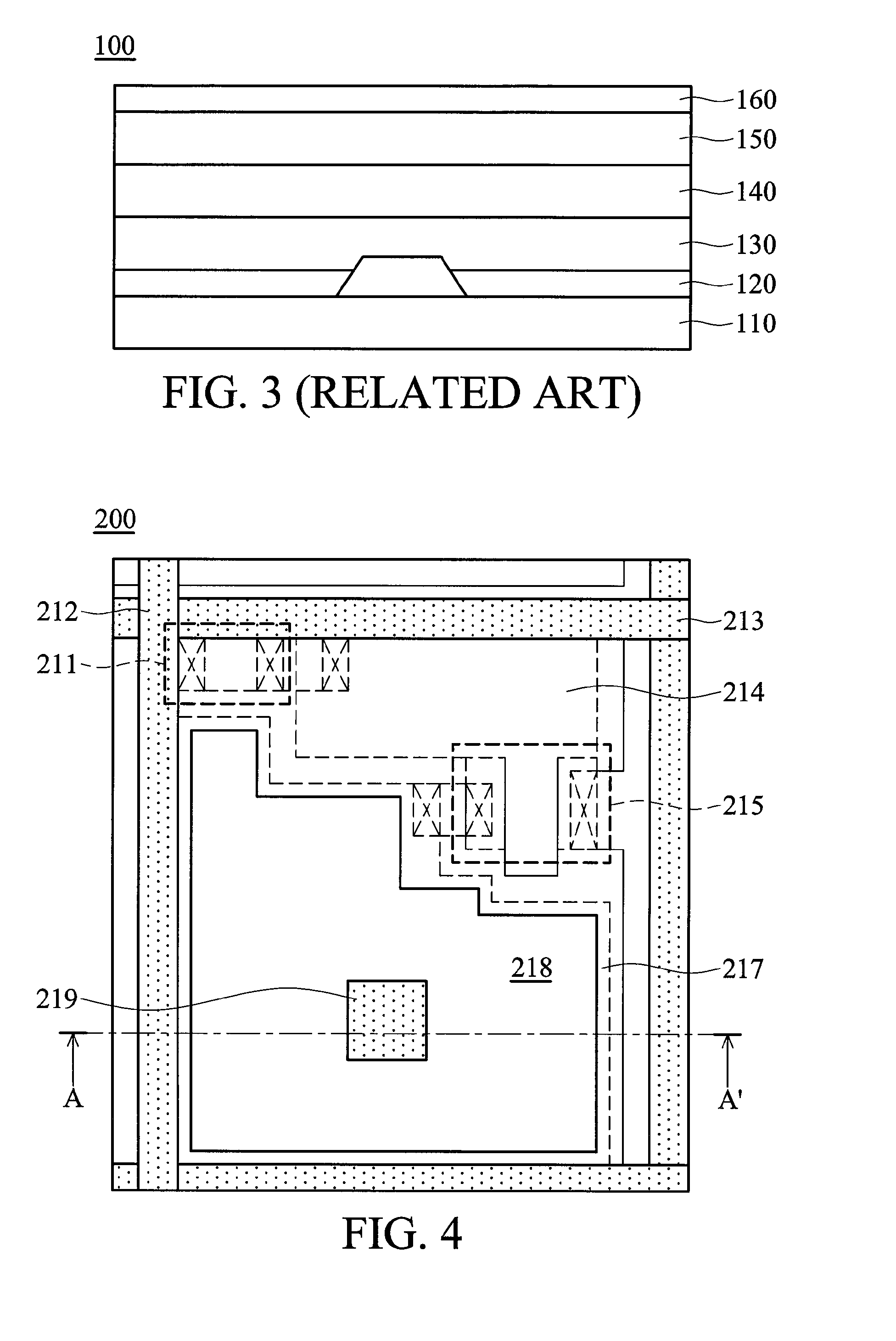Tandem organic electroluminescent device
an electroluminescent device and organic technology, applied in the direction of discharge tube luminescnet screens, discharge tube/lamp details, electric discharge lamps, etc., can solve the problems of poor reproduction, thin electrodes, and the electrode patterning process employing shadow masks is not suitable for large display fabrication, etc., to achieve the effect of not increasing the complexity of the process
- Summary
- Abstract
- Description
- Claims
- Application Information
AI Technical Summary
Benefits of technology
Problems solved by technology
Method used
Image
Examples
Embodiment Construction
[0031]FIG. 4 is a partial schematic diagram of a tandem organic electroluminescent device according to an embodiment of the invention. The tandem organic electroluminescent device comprises a plurality of pixel areas 200 arranged in a matrix.
[0032]Each pixel area 200 comprises a thin film transistor 211 electrically connected to a data line 212 extending along a Y axis, a scan line 213 extending along an X axis, a capacitor 214, a pixel thin film transistor 215, and a rib 217 with chambered corners. The rib 217 with chambered corners is formed on the substrate, surrounding a display region 218. Particularly, the pixel area 200 further comprises a protrusion 219 formed within the display region 218. Further, the pixel area 200 further comprising a plurality of organic light emitting diodes stacked vertically in the display region 218, covering the protrusion 219. Each organic light emitting diode comprises a bottom electrode, an organic electroluminescent layer, and a top electrode (...
PUM
 Login to View More
Login to View More Abstract
Description
Claims
Application Information
 Login to View More
Login to View More - R&D
- Intellectual Property
- Life Sciences
- Materials
- Tech Scout
- Unparalleled Data Quality
- Higher Quality Content
- 60% Fewer Hallucinations
Browse by: Latest US Patents, China's latest patents, Technical Efficacy Thesaurus, Application Domain, Technology Topic, Popular Technical Reports.
© 2025 PatSnap. All rights reserved.Legal|Privacy policy|Modern Slavery Act Transparency Statement|Sitemap|About US| Contact US: help@patsnap.com



